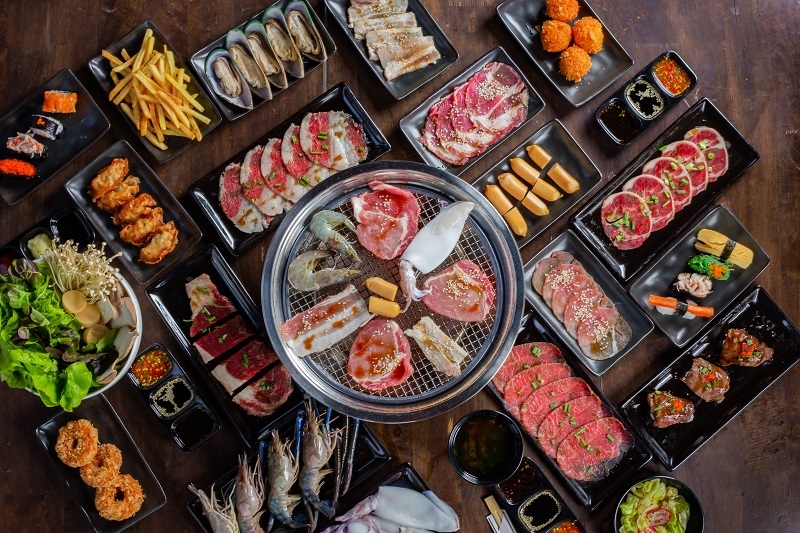
Japan is a land of awe-inspiring beauty, traditions so embedded they form a living tapestry, and culinary traditions like none other in the world, continually inspiring tourists everywhere. For any gastronome, 2025 is becoming a great year to delve into the food traditions of this interesting country. Edible Japan 2025 offers a chance for food travelers to go on an unforgettable adventure of discovery through the nation's regional specialties, classic cooking methods, and special dining experiences.
Tanpopo Journeys, the quintessence of such gastronomy trips, specializes in developing experience-packed food tours. All of their tours are predominantly conducted in small groups that will take travelers far off the beaten paths and into the heart of Japan's culinary heritage. From slurping umami-ful ramen in Tokyo to hands-on sushi-making in Hokkaido, every step along the Tanpopo Journey creates a real food narrative.
Japanese cuisine, which is actually called washoku, is much more than just a set of dishes; it is more art than anything else. Deeply ingrained in traditions, seasonal ingredients, and an unattainable quest for balance and harmony, washoku has things that shaped much of its legacy in history. Washoku was on the list of Intangible Cultural Heritage of Humanity for 2013, cited for being an essential and active part of Japanese culture that has aspects that may translate globally.
A gastronomic travels through the archipelago in 2025 will lay bare the most integral aspects of its food culture in japan:
Through its participation in Edible Japan 2025, visitors will appreciate these culinary pillars even more while enjoying genuine Japanese dining experiences.
Similar Read: Top 6 Famous Festivals in Japan You Shouldn’t Miss in 2025

Your culinary adventure starts in Tokyo, a city where tradition and innovation go hand in hand. As the most Michelin-starred city in the world, Tokyo has an unparalleled dining experience, ranging from simple street food stalls to restaurants known around the world. Visitors can find the legendary Tsukiji Outer Market, a haven for seafood enthusiasts, where they can try freshly prepared sushi, grilled eel, and lovely tamagoyaki. Ramen lovers can immerse themselves in Tokyo's varied ramen scene, sampling everything from rich tonkotsu to light, refreshing shoyu-based bowls. A memorable highlight is sitting down for an intimate sushi omakase dinner, where an expert sushi master assembles a tasting menu utilizing only the finest seasonal produce.
Kyoto, the old imperial capital, is the center of classic Japanese cuisine and the origin of the elegant Kaiseki dining experience. Kaiseki dinners are multi-course meals that reflect the balance of seasonal ingredients, meticulous preparation, and exquisite presentation. A trip to Kyoto would not be complete without attending a traditional tea ceremony, where visitors can learn the meditative technique of preparing matcha. For the traveler looking for something different in a Kyoto specialty, yudofu, a plain but delicious tofu hot pot dish, is best served in the serene gardens of a Buddhist temple. Nishiki Market, sometimes referred to as "Kyoto's Kitchen," provides a variety of gastronomic delights, ranging from pickled vegetables to seafood skewers grilled to perfection, and is a place food lovers should not miss.
Osaka, also known as "Japan's Kitchen," is heaven for street food enthusiasts and the epitome of kuidaore philosophy—eat until you fall down. Osaka's busy Dotonbori area is lined with food stalls sizzling mouthwatering snacks of Osaka's renowned takoyaki, crunchy balls of octopus meat topped with mouth-numbing sauce and bonito flakes. Another iconic dish to try is okonomiyaki, a filling, savory pancake filled with cabbage, pork, seafood, and a range of tasty toppings. Kushikatsu, fried skewers of meat, seafood, and vegetables coated in a sour sauce, is another Osaka specialty that demonstrates the city's bold and lively flavors.
Hokkaido, Japan's northernmost island, is famous for its unspoiled nature, fresh seafood, and rich dairy products. The cold climate and fertile soil lead to some of the nation's best ingredients. Seafood enthusiasts may indulge in the fresh uni (sea urchin), served at its best straight from the shell at any of Hokkaido's lively seafood markets. Another regional favorite, soup curry, is a spiced broth over an abundance of vegetables and tender flesh, a nourishing and warming meal. No trip to Hokkaido would be complete without a bowl of the legendary Sapporo miso ramen, with its rich miso-based broth, chewy noodles, and soft slices of pork.
Suggested Read: A Japanese Tourist’s Guide to Best Attractions In Australia
Perhaps the most thrilling part of Edible Japan 2025 with Tanpopo Journeys is the chance to participate in interactive cooking experiences. These are activities that enable travelers to engage with food culture in Japan on an even deeper level:
Where Japan's culinary scene is concerned, Tanpopo Journeys takes a very specially crafted approach that differentiates it from other tour companies. Their tours are crafted not only to offer food tastings but a comprehensive cultural experience that enhances travelers' connection with Japanese cuisine and culture.
Must Read: 10 Scenic Train Rides in Japan for Stunning Landscape Views
Edible Japan 2025 is not only a food tour but an appreciation of Japan's culinary treasures and a sharing of its flavors in the fullest and most real sense. With Tanpopo Journeys at the helm, visitors can look forward to a one-time experience with memorable meals, cultural learnings, and immersions.
This content was created by AI